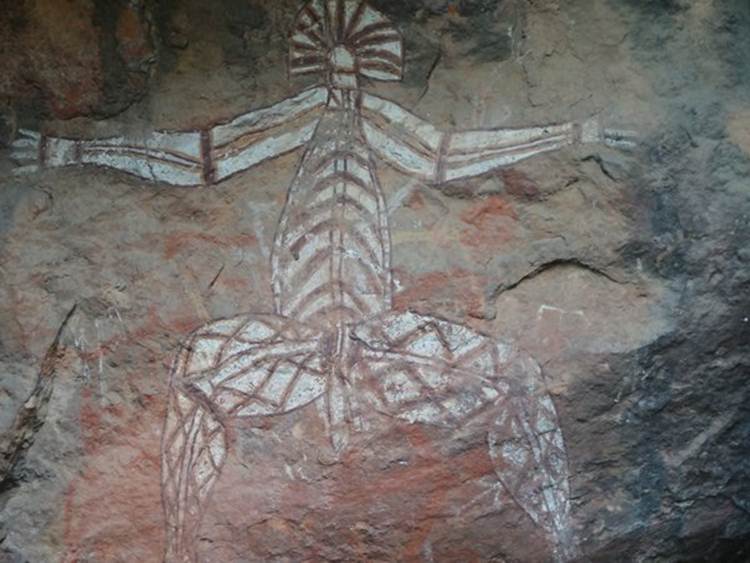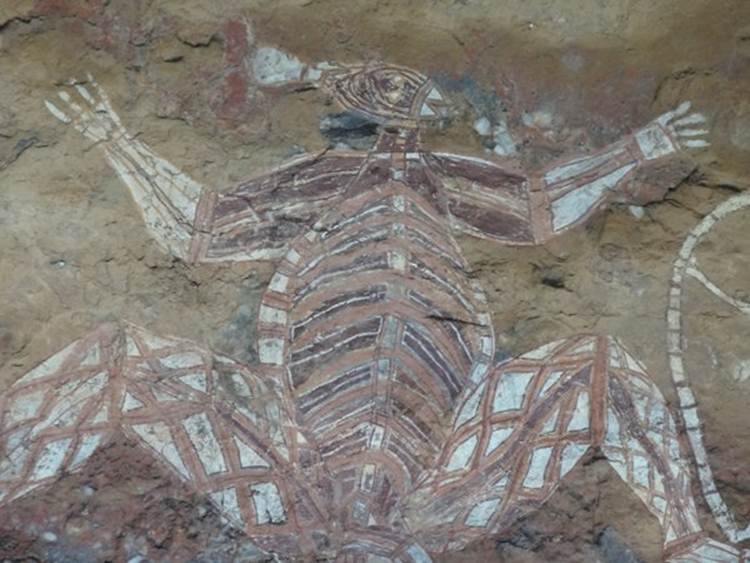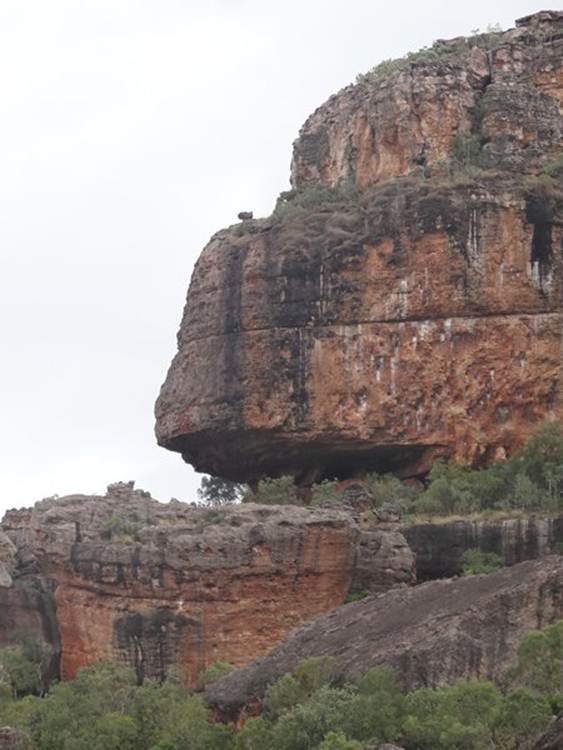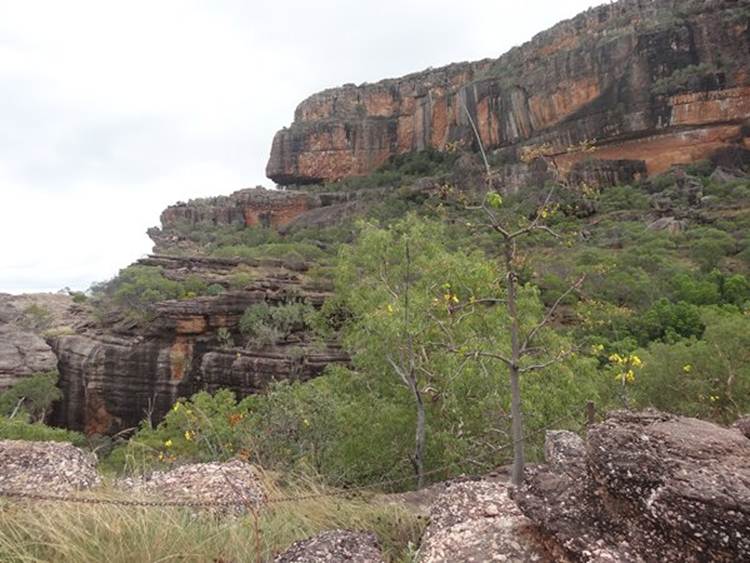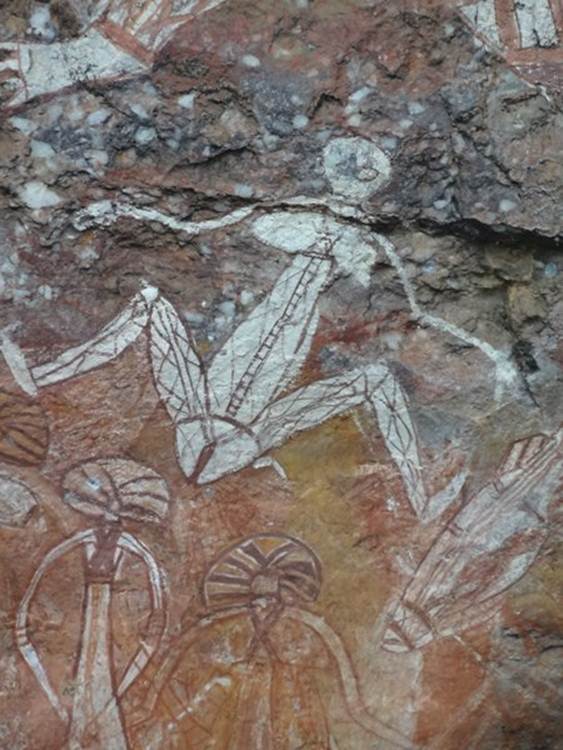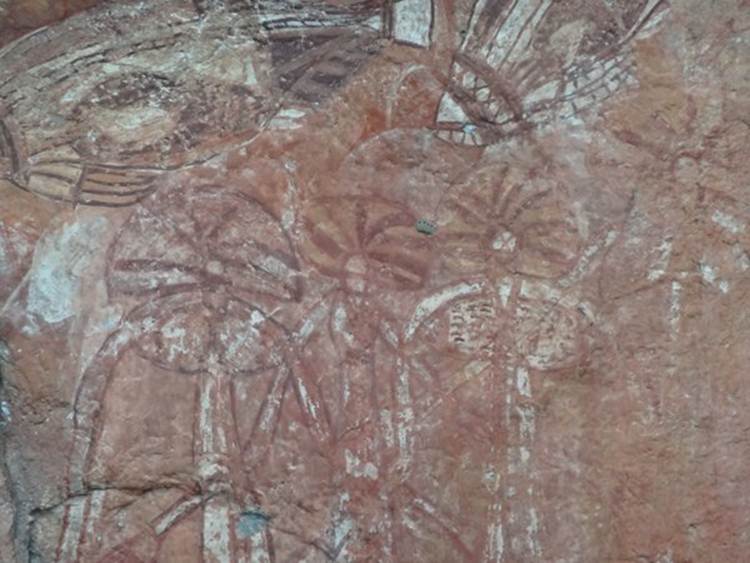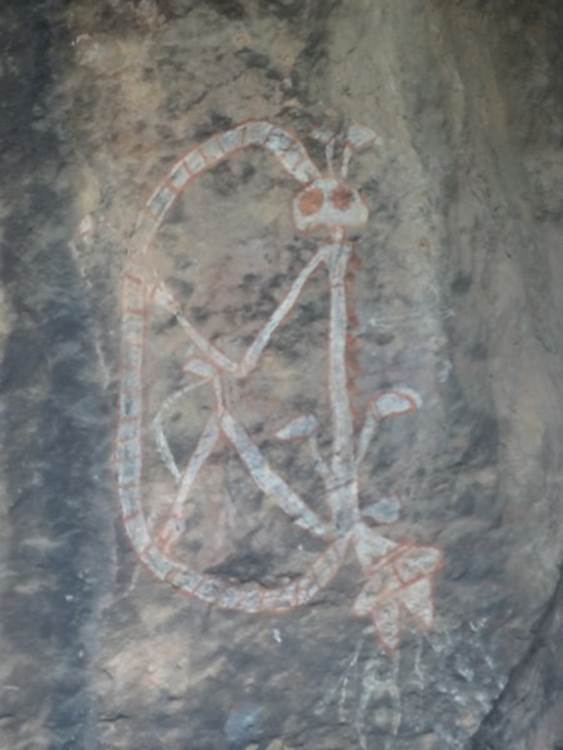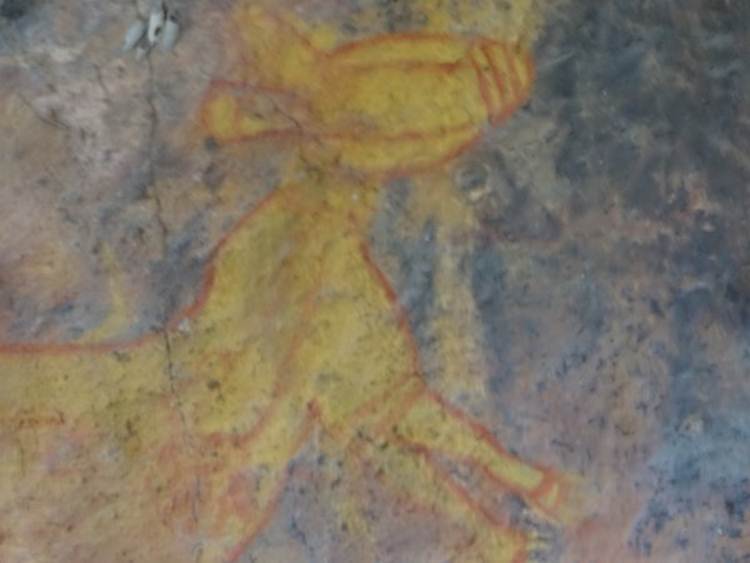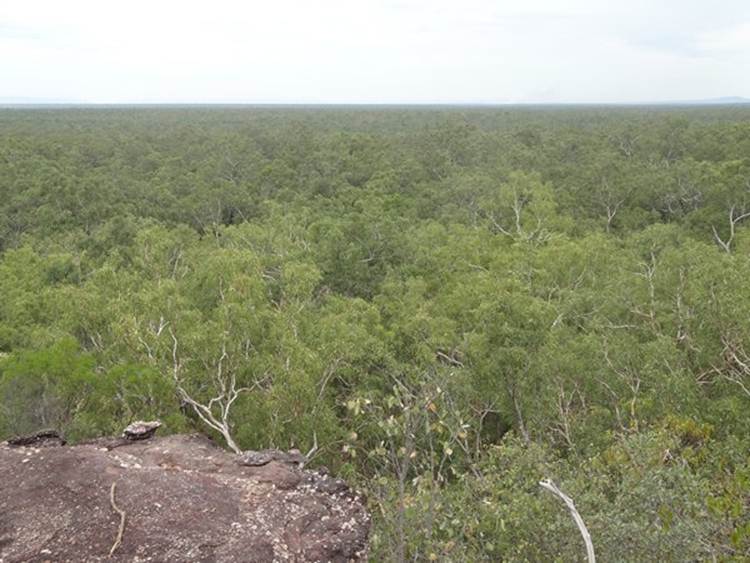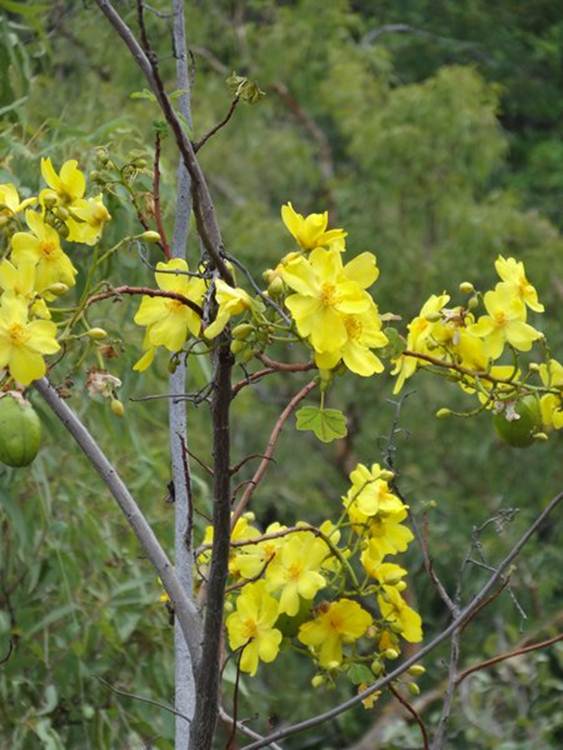Kakadu - Nourlangie art site 2

These paintings are from the Anbangbang gallery and were painted in 19764 by a guy called Nayombolmi, also known as Barramundi Charlie. Apparently aboriginals don’t do rock art anymore, at least that is what we have been told. Anbangbang is on Warramal clan land. One of the saddest things, they have all passed away so other clans are looking after the place for them. This is Nabulwinjbulwinj (Nar-bull-win-bull-win) – a dangerous sprit who eats females after striking them with a yam.
The knowledge associated with many paintings often has a number of levels. Balanda (that’s non aboriginal people) and young tribal people are told the first level, the public story. Access to the full story depends on the individual so we never get to hear any more. Shame because the old folks are dying out and so are their stories. There’s lots of recording being done to preserve as many stories as possible, but lots of aborigines don’t like to reveal their stories. Anyway, rock art was painted to illustrate a story, it could be a creation story, hunting experience or personal experience. There are over 2000 rock art site in Kakadu and Arnhem Land, most of us (non-aboriginals) have access to about 20 sites. I’m assuming one location has several sites because there are only three locations that you appear to be able to visit. Anyway, lots of sites are sacred and not for us to see. These figures were great. This is Namarrgon, the lightening man. You can see he has hammers around his elbows and knees that make thunder. He wears his lightening as a band around him conneting his arms, legs and head.
Namarrgon now lives at Lightening Dreaming. You can just make it out as the three tall pillar like cliffs along the Arnhem land escarpment from Gunwarrde Warrde lookout. It’s a dangerous and sacred place, if you disturb it, big and widespread trouble results.
This is Namarndjolg.
He and his sister broke incest laws on the rock edge above this gallery. He later became Ginga, the saltwater crocodile. Incest laws are not necessarily referring to members of the same family, but extend to community members with the same cultural responsibilities and relationships. We’ve learnt a bit more about names. Aboriginals have their white man’s name, Fred, Jo etc., their aboriginal name and a skin name. From what we can gather there are 8 male and 8 female skin names. In this region the males begin with n and the females begin with a. I’m assuming then that the 16 aboriginal names are beneath this layer. Who can marry whom, or speak to whom is strictly laid down. So if male and female represent the skin names 1, 2 etc. Male 1, female 1 male 5, female 5 Male 2, female 2 male 6, female 6 Male 3, female 3 male 7, female 7 Male 4, female 4 male 8, female 8 When a child is born, say to female 2, the daughter takes on the skin name of female 3. A son will take male 3 kin name. Children are always named via their mother. They can only marry someone belonging to the male 7 or female 7 skin names. Children born to female 3 take on the skin name of female 4 or male 4 and can only marry someone in the male 8, female 8 skin name. So it will take 3 generations before you get back to female 2 skin name. Great way to keep genetic diversity but it does mean that you suddenly not only have your birth sisters and brothers but a whole load of sister, aunties, uncles with the relevant skin names. Certain skin names are taboo to other skin names, so you often see people sitting near each other but with their backs to each other as they are not allowed to talk. The rock you can see on the first ledge is supposed to be a feather from Namarndjolg headdress.
A close up of this view
This is the lightening man’s wife, Barrginf. She and Namarrgon are parents to children called Aljurr. They all came from the north coast searching for a good place to settle. The actual lightening is Aljurr, which means little lightening. Aljurr also have another form, the bright organge and blue grasshopper – Leichhardt’s grasshopper (Petasida ephippigera)– which I have been desparate to see but at wrong tme of year. They arrive during the early storm season when Binginj say they are looking for Namarrgon. When Binginj see these they know time to take shelter. The fish you can see is Guluibirr, the Saratoga fish. This is a popular food fished from the waterways nearby.
Family groups of men and women on their way to a ceremony.
Flecks on the breasts of the woman on the right indicate she is breast feeding.
Another image of Namarrgon
And a kangaroo or wallaby.
View across floodplain from Gunwarrde Warrde lookout
This is the Kapok bush (Cochlospermum fraseri).
The pods you can see here, turn brown and then open up releasing a cotton like material.
These are paper bark trees. Really, really soft bark. Aboriginals used is for mattresses, to line baskets that they carried new born children in, make torches, make shelters.
|
